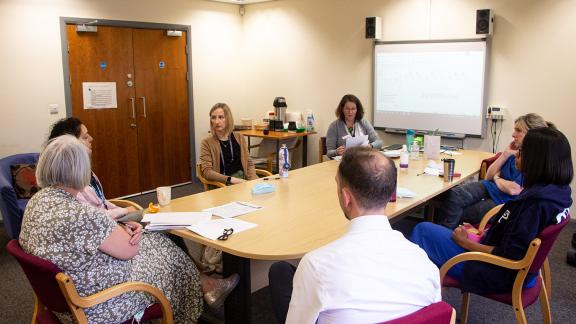Lessons learned in staff engagement during COVID-19: Wrightington, Wigan and Leigh Teaching Hospitals NHS Foundation Trust

Wrightington, Wigan and Leigh Teaching Hospitals NHS Foundation Trust has a record of high levels of staff engagement. The COVID-19 pandemic has created pressures and challenges that are felt across the organisation with many staff re-deployed into other roles.
The trust identified that COVID would have an adverse effect on staff engagement, health and wellbeing, and therefore adapted its local survey tool – Go Engage - to help assess the impact and make more effective interventions.
The challenge
With the COVID-19 outbreak and significantly increased pressures, the trust felt it was important to measure engagement to give staff the opportunity to share how they were feeling, what was going well and what could have been improved in the organisation’s response to the pandemic.
The trust was concerned that demands on staff were rising and many staff were being redeployed into new roles and areas potentially impacting on their experience of working in the organisation. There were also reports of rising anxiety, psychological distress and reduced self-care with an impact on health and wellbeing
Systematic information was required to understand the impact of COVID-19 on staff experience and how staff were coping with increased pressure. For the past four years the organisation has run its own locally-developed survey tool, Go Engage. This provides an insight into staff experience and informs its people management approach. To better understand staff views during the pandemic, this tool would be key in gaining insight.
What the organisation did
The trust identified that it needed to get feedback from staff on the impact of COVID to take effective action. In particular, it sought to get views on what it had done well and what could be improved. The organisation adapted its standard survey to include 16 evidence-based COVID-19-related questions. It measured how it had responded to the pandemic as a trust, such as communication, wellbeing support, decision-making, leadership and how staff felt working with the demands of the pandemic. The results of this survey helped shape the wellbeing strategy, specifically around a second wave.
Using the information from the survey, the trust developed a stepped model of support, which gave staff mental health support at four levels, from basic needs to more in-depth support for mild, moderate and significant distress.
Results and benefits
Overall, staff reported moderate to high scores across all areas. Particular areas of strength included staff feeling safe and satisfied with the wellbeing resources that were available.
The organisation found that perception of the trust’s response had the biggest impact on the extent to which staff would recommend it as a place to work and to receive care, and on staff perceptions of their wellbeing, safety and ability to continue working with the demands of the pandemic. The survey also showed that visible leadership had the biggest impact on energy levels of staff.
Redeployed staff scored slightly less positively, in particular regarding to visible leadership.
The organisation had over 200 visits to SOS rooms in the first month, provided support to between 70-100 staff per month through in-reach work, recruited 90 wellbeing champions, and conducted wellbeing walkabouts to visibly support staff and signpost available support.
Pre COVID-19, stress related sickness absence was at 1.25 per cent, increasing to 2.4 per cent in May 2020. This was then reduced to a current level of 1.4 per cent be November of the same year, showing early indications of the positive impact of the support on offer.
The survey suggested a particular issue in relation to redeployed staff. These staff scored lower in their perception of visible leadership. It also found that visible leadership impacted on wellbeing scores. In response, the trust decided to focus on this, using the following methods:
- leadership walkabouts
- regular virtual briefings
- listening events
- compassionate leadership.
Takeaway tips
- Measurement is a key element to effective intervention.
- Prioritise psychological support within health and wellbeing.
- Communication and visible leadership are key.
- Look at views from particular groups as well as the overall responses of staff.
Further information
For more information please contact: Sarah Lavin, senior organisational psychologist, Wrightington, Wigan and Leigh Teaching Hospitals NHS Foundation Trust.
Email: Sarah.Lavin@wwl.nhs.uk



